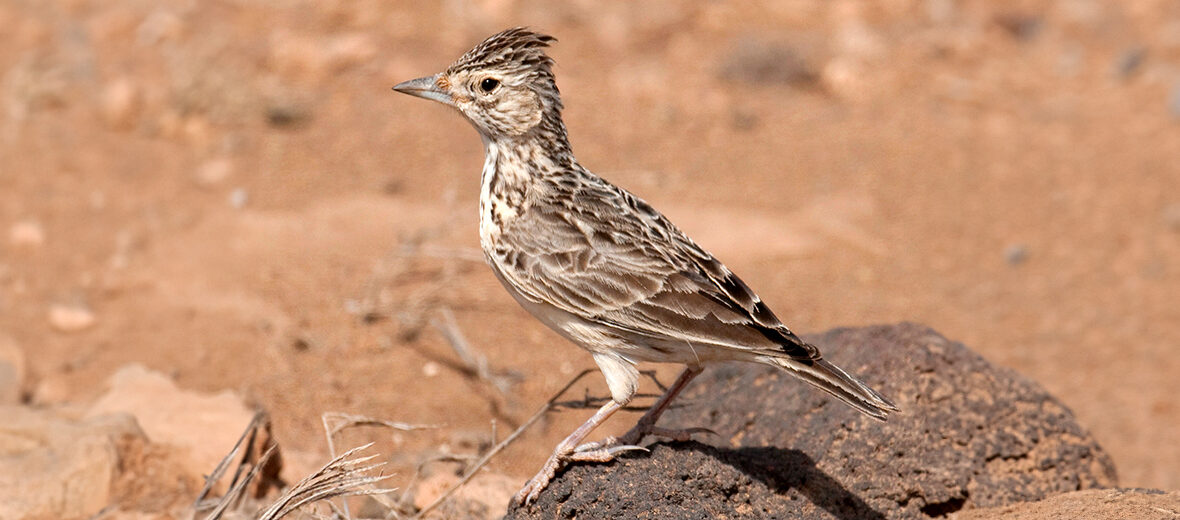
The Raso lark, aka Cape Verde Islands lark, Raso short-toed lark, Raso Island lark, or Razo skylark, is only found on Raso islet in the Cape Verde Islands; off the west coast of Africa. Unfortunately, they face the threats of invasive species – and with them disease and predation; and climate change – and with it droughts and habitat alteration. Their population trend, as of 2021 is listed as stable, but they are still listed as Critically Endangered by the IUCN.
First the Stats…
Scientific name: Alauda razae
Weight: Up to .99 ounce
Length: Up to 7.1 inches
Wingspan: Up to 6.86 inches
Lifespan: Up to 13 years
Now on to the Facts!
1.) In the past, they were believed to have ranged over 2 other islands, Branco and São Vicente Island.
2.) Unfortunately, human colonization in the 15th century was followed by a swift extinction of much of the local fauna on the islands.
3.) Fortunately, Raso islet itself has no permanent water and thus has never been inhabited by humans.
4.) The island consists primarily of rocky desert with some sandy portions in the west.
5.) Due to the scarcity of water, these birds are often forced to travel across the island for vegetation.
But wait, there’s more on the Raso lark!
6.) Insect larvae and nutsedge bulbs make up their diet.
7.) Males court the females by softly singing, raising their chest, and hopping around while their wings are spread open.
Did you know…?
There are less than 1,000 wild individuals remaining.
8.) When finished mating, both male and female construct a nest of dried grasses.
9.) Females lay up to 3 eggs, a day apart, that hatch in up to 15 days.
10.) Predators include the Cape Verde giant gecko, lesser Cape Verde kestrels, brown-necked ravens, Cape Verde barn owls, and the potential of introduced cats, dogs, and rats.
But wait, there’s still more on the Raso lark!
11.) The sex ratio is highly skewed at 2 males to 1 female.
12.) Coupled with the skewed sex ratio these birds only reproduce when it rains, which isn’t often. The risk of total extinction is just an accidentally released cat, dog, or rats away.
13.) It has been proposed, yet not acted upon, to set up a population on the island of Santa Luzia.
Now a Short Raso Lark Video!
This video talks about larks in general.
Be sure to share & comment below! Also, check out the Critter Science YouTube channel. Videos added regularly!
Want to suggest a critter for me to write about? Let me know here.
Some source material acquired from: Wikipedia & IUCN
Photo credit: Earth.com



